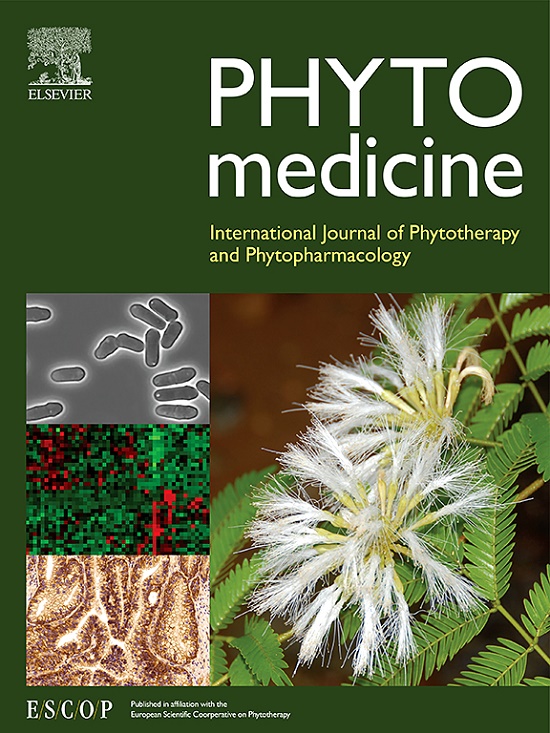Effective compound combination of Bufei Yishen formula ameliorates PM2.5-induced COPD by inhibiting mitochondrial oxidative stress through SIRT3-mediated FOXO3 deacetylation
IF 6.7
1区 医学
Q1 CHEMISTRY, MEDICINAL
引用次数: 0
Abstract
Background
Fine particulate matter (PM2.5) exposure significantly contributes to the development of chronic obstructive pulmonary disease (COPD). However, the underlying mechanisms remain inadequately elucidated, and there is a lack of effective clinical treatments. A combination of five bioactive ingredients derived from the traditional Chinese prescription Bufei Yishen formula (BYF) that is widely accepted for COPD treatment, exhibits bioequivalence with BYF and has been shown to alleviate COPD exacerbation in rat models induced by PM2.5 exposure.
Purpose
To investigate the underlying mechanisms of the effective compound combination (ECC) attenuating mitochondrial oxidative stress in COPD progression induced by PM2.5 exposure.
Methods
The COPD rats were induced by cigarette smoke inhalation and bacterial infection, then exposed to real-time PM2.5 by a whole-body exposure system. The therapeutic efficacy of ECC was assessed by evaluating lung function, pathological changes, levels of oxidative stress, and inflammation. In vitro, the PM2.5-induced human bronchial and alveolar epithelial cells (BEAS-2B and HPAEpiC) were used to explore the underlying mechanisms of ECC against mitochondrial oxidative stress.
Results
Initially, based on the successful establishment of a PM2.5-aggravated COPD rat model, we demonstrated the protective effects of ECC on COPD progression induced by PM2.5 exposure by improving lung function, alleviating pathological injury, and reducing oxidative stress and inflammation. Subsequently, we identified that the inhibitory effects of ECC on mitochondrial oxidative damage, respiratory dysfunction, and fission/fusion imbalance induced by PM2.5 are primarily mediated through SIRT3 activation, both in vivo and in vitro. Mechanically, the deacetylation of FOXO3 at lysine residues 271 and 290 by SIRT3 is crucial for ECC to mitigate mitochondrial oxidative stress during the progression of COPD in response to PM2.5.
Conclusion
This study reveals a previously unrecognized mechanism by which ECC acts as an agonist of SIRT3, offering potential therapeutic benefits for patients with COPD who are exposed to PM2.5.

求助全文
约1分钟内获得全文
求助全文
来源期刊

Phytomedicine
医学-药学
CiteScore
10.30
自引率
5.10%
发文量
670
审稿时长
91 days
期刊介绍:
Phytomedicine is a therapy-oriented journal that publishes innovative studies on the efficacy, safety, quality, and mechanisms of action of specified plant extracts, phytopharmaceuticals, and their isolated constituents. This includes clinical, pharmacological, pharmacokinetic, and toxicological studies of herbal medicinal products, preparations, and purified compounds with defined and consistent quality, ensuring reproducible pharmacological activity. Founded in 1994, Phytomedicine aims to focus and stimulate research in this field and establish internationally accepted scientific standards for pharmacological studies, proof of clinical efficacy, and safety of phytomedicines.
 求助内容:
求助内容: 应助结果提醒方式:
应助结果提醒方式:


